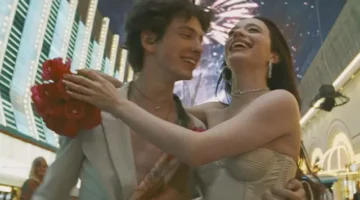Tropic Sprockets
The Skeleton Twins
Filmmaker Craig Johnson (True Adolescents) takes us on a novelistic journey that is as rich as a work by Salinger. The film, “The Skeleton Twins” produced by Mark and Jay Duplass, is thrilling, meaningful and provocative in tone.
Kristen Wiig (Bridesmaids, SNL) as Maggie is gripped in depression. Just as she is about to take a heap of sleeping pills, she gets a call from the hospital. Her brother Milo (Bill Hader) has attempted suicide. Maggie steps up although she hasn’t seen Milo in 10 years.
In a parallel of sorts to “Love Is Strange,” Milo moves in with Maggie and her husband: The macho, athletic but likable Lance (Luke Wilson).
Much of the comedy in the beginning centers on the glib sharpness of Milo up against Lance’s slow wit. The dialogue makes for some laugh out loud funny bits with exchanges destined to be classic, reminiscent of “A Fish Called Wanda.”
The movement of the film swerves into seriousness however, when it is revealed that Milo is still emotionally dependent on his male teacher, the lecherous and closeted Rich (Ty Burrell), whom he had sex with in high school.
Maggie has her emotional addictions as well, committing adultery several times with various continuing education instructors.
“The Skeleton Twins” is a diverse odyssey in friendship and family love that is nothing short of a roller coaster. Wiig and Hader who worked together on “SNL” know each other well with such looseness and easy verve that they might as well be siblings, if not by blood, then by profession. Their exchanges are simply authentic.
Not a single one of the characters is cheaply done or played for quick laughs. These people (especially Maggie and Milo) are genuine and made of flesh. Although quick and brief as with a pastel drawing, we see this sister and brother as colorful grinning goblins that use Halloween as a holiday shield against dysfunction, insecurity and sadness and we grow with them.
The ghost of their father is felt throughout as a “Day of The Dead” laughing skull, although he is masked and only sketchily visible. Indeed, the father’s philosophical antidote of joking through pain makes able medicine against a controlling mother’s New Age nonsense (singularly delivered by actress Joanna Gleason) in one of the film’s best scenes.
It is a point of view that these two have taken to heart and despite the upheavals, at once tense and tittering, it serves them well. This film succeeds where so many other indie comedies fail; it maintains a perfect tone throughout.
No one segment is superfluous or thrown away upon the eye and even the incidental scenes offer a dry and soft-biting wink. The beginning flashes of Milo and Maggie as children in particular, have a fine delicate hand that recall a Charles Addams cartoon, and a sweet yearning for some unapologetically black humor.
Though one might well think of immediate laughs, the film is neither a drama nor a comedy. More than anything, it is a portrait of a sister and a brother in the midst of their similarities and differences.
“The Skeleton Twins” far outshines most indie films by betraying no confining heaviness or fluffy lightness. As close as possible, (especially given that these two famed comedians, Kristen Wiig and Bill Hader have such a previously recognizable shtick) this is life.
Love Is Strange
Ira Sachs (Keep the Lights On) hits upon familiar territory once more in “Love Is Strange,” a character study of two older men who are just married, struggling and in love.
George (Alfred Molina) is a music teacher in a New York City Roman Catholic school while Ben (John Lithgow) is a painter with brief touches of fame. As a couple for 40 years they decide to marry. But all is not smooth.
Through Facebook, word gets out among the school administration in regard to George’s wedding and he is promptly fired. Since the couple has lived just a bit beyond their means, they can’t afford the nice apartment in the city and the two call a family conference.
While they have the support of their relatives, not one of them is all that thrilled to have them as roommates. Ben and George decide to split locations in order to keep the city life. The bohemian Ben takes up with his nephew Elliot (Darren Burrows) and his wife Kate (Marisa Tomei) while the more conservatively appearing but perhaps inwardly daring,
George moves in with two gay cops (played by Manny Perez and Cheyenne Jackson) Kate can’t work on her novel because of Ben’s vocal self doubts together with his large and somewhat slovenly appearance. Elliot is invariably preoccupied on the phone, taking on the form of something halfway between a skeleton and a ghost.
Kate is at her wit’s end. Across town, George doesn’t fare much better, forever assaulted by disco music and a motley assortment of strangers. The core of this film is the believable qualities and emotional chemistry between Lithgow and Molina.
Lithgow’s Ben is aloof, a tad passive and elitist, while Molina as George is a nervous teddy bear who frets over nuances and expenses. These two have indeed lived and loved each other, both apart and together. With just a few bare touches of the hand, we can feel their seasons and grasp the texture of intimacies shared — be it by fire or along the rocks of an ocean.
While all of the actors have fine outings (Darren Burrows is both a non-entity and a threat, while Marisa Tomei is a chattering wreck) it is Charlie Tahan that shines as the shy but seething son Joey who is anarchistic and homophobic.
Actor Eric Tabach is a highlight too, as the aloof and arrogant Vlad, Joey’s friend. Lithgow’s performance embodies a nostalgic and melancholy New York that still retains a hope to recapture times long gone by.
Ben’s art, reminiscent of the Ashcan school and Andrew Wyeth, speak of a 1970s metropolis of diners and gay bars, which are now little more than a comet’s reflection or the trace of Warhol’s silver star.
When Ben falls down the stairs, overrun by the heaviness of metal and his own body, the city is seen in a void as the blankness of skyscrapers rush by.
The message of “Love Is Strange” suggests that the intimacy of caring holds through any emotional famine as the heart and memory fuses to make a living memento: one part creating a cameo and the other, a steady compass.
Write Ian at [email protected]
[livemarket market_name="KONK Life LiveMarket" limit=3 category=“” show_signup=0 show_more=0]









No Comment